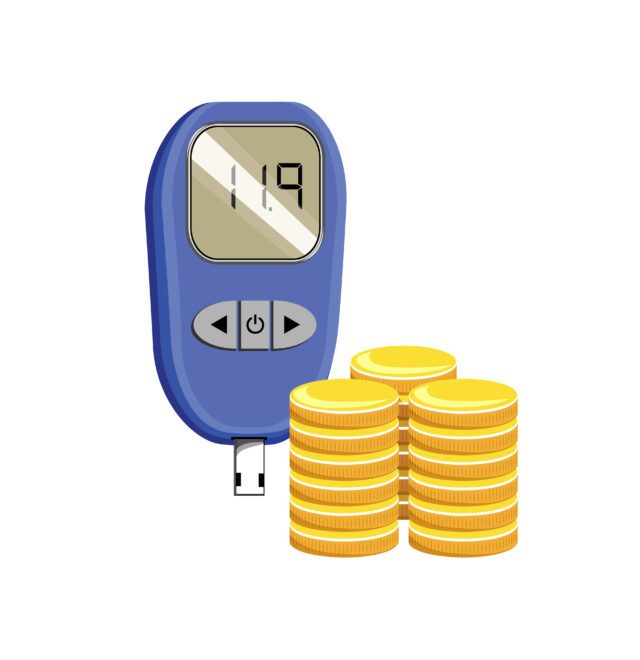Have you ever thought about the monetary cost of a disease? As in how much money you might dole out over your lifetime trying to either survive a disease, or recover from it?
How does about $130,000 sound, give or take? That’s the estimated cost of living with type-2 diabetes, according to a recent study published in the American Journal of Preventive Medicine.
I don’t know about you, but that sounds like a nice retirement fund, or money for your kids’ college expenses, or a fancy new boat… all for something that can be almost completely preventable.
Obviously, this issue is a valid concern. Diabetes is on the rise in our nation; mostly because obesity is on the rise as well. In this case, it’s not a question of the chicken or the egg… we know which one came first. And the experts agree. Lead author, Xiaohui Zhuo, PhD, of the Centers for Disease Control and Prevention in Atlanta, had this to say: “This has become increasingly important given the rapid increase of the number of the incident cases in the U.S. and worldwide.”
And it is a very rapid increase. According to 2012 statistics, an estimated 26 million people in the U.S. have diabetes – 90-95% of which are type-2. In adults aged 20 and older, more than 1 in every 10 have the disease, and in seniors (65 and older), that figure rises to more than 1 in 4.
The monetary values break down into direct costs for treating the disease itself, such as doctor visits, medication, and testing supplies, and for treating complications of the disease such as kidney disease, nerve damage, eye damage, heart disease, amputations, and stroke.
And while there has been a reduction in the number and need for amputations, kidney dialysis and kidney transplantation, the increase in the number of cases of type-2 diabetes is adding to the yearly costs.
Robert E. Ratner, MD, chief scientific and medical officer at the American Diabetes Association said, “A better way of [looking at] it is to note that in 2012, in the U.S., we actually had $176 billion in direct medical costs treating people with diabetes. This is up 40 percent in five years.” And those are just the direct costs… total costs of diagnosed diabetes reach $245 billion. $245 billion? Up 40 percent in only five years? What exactly is going on here?
The Blame is Placed
The Global Burden of Disease Study is a global project that has studied the trends of health and healthcare over the past few decades. The study is a collaboration of 488 researchers in 50 countries, and analyzes deaths and disability caused by 291 diseases and injuries across the world.
The United States, according to this study, has seen a dramatic shift in the past 20 years. While we, as a nation, are living longer, the quality of life has diminished. Diseases that may have cut lives short just 30 years ago are now treatable to the point where life extension is possible. However, the overall quality of health has suffered.
And guess what? While the U.S. spends more on healthcare than any other country in the world, we still lag far, far behind other countries when it comes to health. Specifically, the U.S. trails behind the rest of the world with regards to violence, heart disease, traffic accidents, and diabetes. Our disability rate is alarming; the most significant causes of disability in the U.S. include depression, low back pain and musculoskeletal disorders, and depression, anxiety and mental disorders account for a staggering 25% of American disability claims.
“We have been gradually improving over the last 20 years, but other countries have progressed even more rapidly, and our relative standing compared to other wealthy countries has actually declined,” said Dr. Harvey Fineberg, president of the Institute of Medicine.
The sad part is, most – if not all – of the health conditions that are bringing us down, collectively, can be addressed by lifestyle changes such as improving nutritional choices, exercising and not smoking.
It boils down to this: obesity, diabetes, and eating processed, preservative-packed, GMO-laden food are all connected. Should you really be surprised that as a nation we’re spending $245 billion on diabetes annually?
Wouldn’t it be worth it to YOU to save that $130,000 you might be spending on diabetes down the road simply by eating better, getting off your butt once in a while and putting down the cancer stick?









